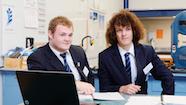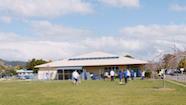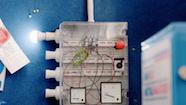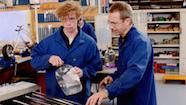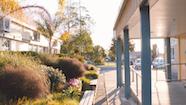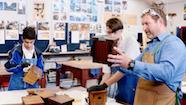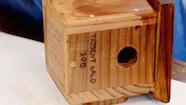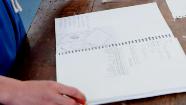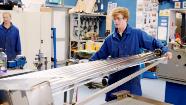A year 13 student and his teacher discuss their energy-saving project.
Renewable energy: Wind turbine
Transcript
Dave Dobbin, Metal Technology Teacher
Lucas, Year 13 student
Dave: So Lucas where did you get the wind turbine from?
Lucas: We got it donated from Iain Charity.
Dave: What do you know about the wind turbine?
Lucas: We spun it up on a drill and we got it to 97–100 volts with 2 amps. We’re putting it on top of the old boiler shed on the chimney stacks.
Dave: OK and what height, what parameters do we know about that?
Lucas: 50 feet, so about 15 metres.
Dave: Right.
Lucas: Part of year 13 technology students, and we’re doing renewable energy this year and try and get most of the school costs down, and save energy, and just learn about trying to save energy for the future and once we leave school.
Dave: Have you got any idea what our goal is for the school, in terms of energy reduction over time?
Lucas: 40%
Dave: Yes, in a five year timeframe, that’s right. How will your wind turbine contribute to that?
Lucas: It’s going to be an off-grid system because we don’t have the models and stuff connected to the grid and so it’s just going to power floodlights in the shed. I picked this project because last year I was doing the PV panels so I never really want to do that one again and I don’t know, I just found the wind turbine interesting to do. Year 13 last year, we just made small solar panels just to power phones, or laptops, or whatever we chose. We just soldered them together and made the PV panels. (I) started the year in a group, so there were two of us doing the wind turbine and my partner left school to do an apprenticeship and so after about term two I’ve been working on it by myself, pretty much.
Dave: Can you walk us through what you’ve had to do with this turbine, right from the start? What’s been involved?
Lucas: From the start we had to pull it apart and see what it actually was because we didn’t know anything about them. We just replaced all the bearings, fixed it up, repainted it, tried to put it back together and just spun it up to see how much power it produces – so we had a few problems with trying to rebuild the wind turbine – so we had to replace the three brushes in it.
We found a website online, Carbon Technologies, and we got six brushes donated from them and spent a few lessons trying to cut them down and just sand them to the right shape. Also had a few seized bearings which we had to try to take off, get the right sizes, get some new ones.
Last week we had two members from the council, John Mandemaker and Lisa Millican come out here and we had a meeting with them to talk about where it’s going and problems we could have with sound from neighbours across the road from the schools. Just trying to sort that out so we can have a solution to either put it out there and if it did make too much noise we would just stop it from rotating. Or if it didn’t make too much noise that we’d just leave it there and keep it how it was. So we originally talked to the council to try and see if we needed a resource consent to put it up on the building. Currently just putting all the wires in the circuit together and building a stand or a pole for it to go on. Got all the design finished for making a stand, just putting spigot through the lathe to get it to the right size, then just welding it together and making it ready so we can install it.
Dave: What’s involved with installation?
Lucas: We’ve got to get a crane from Mahy Cranes to take it up and a certified rigger (for safety compliance).
Dave: And when’s that likely to happen?
Lucas: We’re trying to get it on the second week of the school holidays.
Related videos
Renewable energy: Solar panels (03:46)
Students developed a brief for their project based on an authentic context.
Renewable energy: Solar panels for special education (04:30)
Year 13 students embraced an opportunity to work alongside the special education centre.
Renewable energy: A model micro-hydro system (04:39)
Year 13 students explain their water powered turbine.
Renewable energy: Teaching programme (05:07)
Dave Dobbin inspires his year 13 students to learn about renewable energy.
Renewable energy: Principal and community support (04:35)
Input from the community helped this school project to grow.
Manufacturing nesting boxes: Halo project (04:35)
A great story prompted students to get behind a community project.
Values: Halo project (02:23)
Year 11 students deepened curriculum understandings through helping their community.
Key Competencies: Halo Project (02:44)
This technology project has rich links to the key competencies.
Renewable energy: Solar water heating (04:20)
Year 13 students discuss their solar water heating project.

